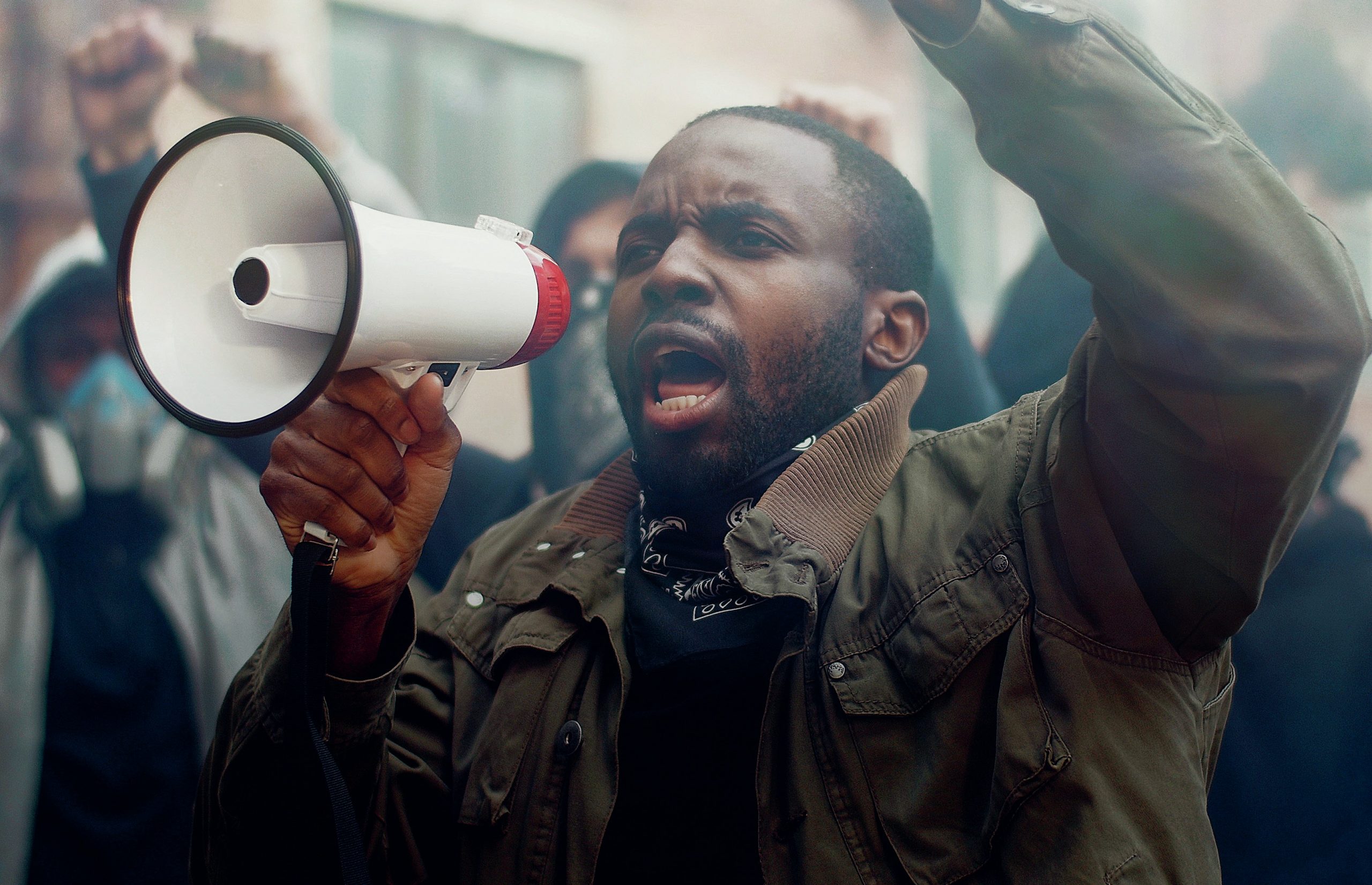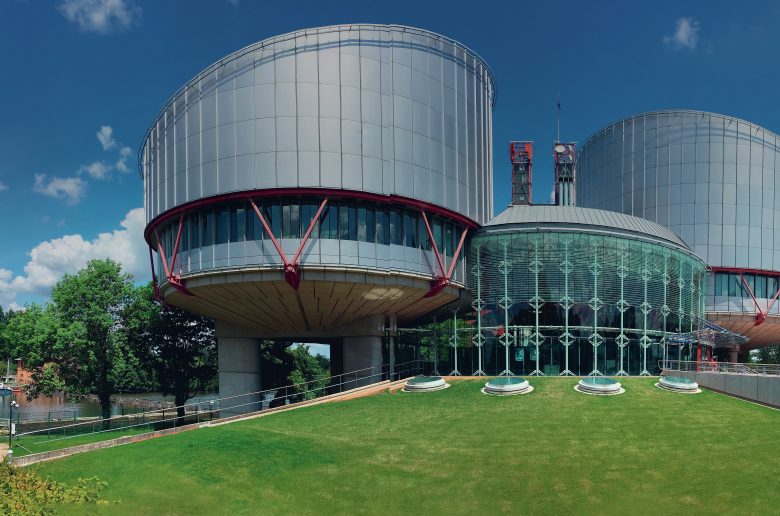Evaluating human rights
Giles Bayliss assesses whether Article 10 of the European Convention on Human Rights adequately achieves a balance between the rights of the individual and the regulation needed in a democratic society

EXAM FOCUS
This article is relevant to: OCR Unit 3 (human rights), AQA (human rights), Eduqas Component 3 and WJEC Units 3 and 4.
One challenge at A-level is how to approach evaluation questions. These require students to demonstrate knowledge of the law, identify and weigh up relative strengths and criticisms of that area of law and address the viewpoint put forward in the question.
In approaching evaluation questions, it is helpful to remember that you should be engaging with a viewpoint or perspective. If you know the law, you will have cases and examples you can discuss and relate to the question asked.
One sensible approach is to begin by outlining the law. This cannot be a detailed explanation but will highlight key aspects of the law with relevant cases. This has the advantage of picking up AO1 marks (for demonstrating legal knowledge) and reminding yourself of potential issues to discuss. It is best to limit yourself to four or five evaluative points. How many you make will depend on the extent to which you explore and discuss an issue. It is best to avoid a list approach and rather demonstrate your understanding through a more detailed exploration of a point. The issues highlighted below are not exhaustive, simply examples of points you could explore when responding to an essay question evaluating freedom of expression.
Freedom of expression is a fundamental right that underpins other core freedoms. It is regarded as fundamental to democracy and vital to human development and autonomy. Without it there can be no public debate, government accountability or open criticism. However, as a qualified right, an appropriate balance must be struck between protection of a fundamental freedom and legitimate restrictions to protect the rights of others and take account of the wider public interest.
Strengths
One strength of Article 10 is how it has been interpreted to include new forms of technology. This recognises the changing nature of society and how people communicate, receive and impart information and ideas. It also highlights the wider ‘living instrument’ concept that has emerged as a key feature of the European Convention on Human Rights (ECHR). This refers to the approach of the European Court of Human Rights (ECtHR) in interpreting the Convention in the light of contemporary conditions so it remains relevant and takes account of changes in European society. Without this broad interpretation, freedom of expression would not be adequately protected.
The recognition that new methods of disseminating information require protection can be seen in Yildrim v Turkey (2013). In this case the ECtHR unanimously ruled that the Turkish government was in breach of Article 10 after blocking access to websites hosted by Google. The government objected to the content of a website that was critical of the founder of the Turkish republic and responded by blocking access to all websites hosted by Google. The decision recognises the internet as a principal means of exercising freedom of expression.
A criticism might be the lack of regulation of some forms of social media, something highlighted by the coroner at the Molly Russell inquest in 2022. This case concerned the suicide of a 14-year-old girl and the ease with which she was able to access harmful online content via platforms such as Facebook, Instagram and Pinterest. This is something that the Online Safety Bill, currently before Parliament, will address.
The right to offend
Another strength of Article 10 is the recognition by domestic courts, as well as the ECtHR, that if freedom of expression is to mean anything, it has to be interpreted to include the ability to communicate opinions and ideas that might offend others. In Handyside v UK (1976) the ECtHR ruled that freedom to express unpopular views was as important as the ability to express views that will be favourably received, regarded as inoffensive or received with indifference.
The freedom to challenge conventional viewpoints and offer unpopular opinions is widely acknowledged to be central to freedom of expression. If freedom of expression only embraced ideas that were well received, it would be a meaningless right. Freedom of expression links to the search for truth, individual fulfilment and social progress. However, the law recognises limits and the right to offend does not extend to threatening or inciting violence or hatred.
A balancing act
Not all speech is protected by the Convention. This can be seen in Article 17, which prohibits any actions that aim to destroy the rights and freedoms contained in the Convention. In Garaudy v France (2003) a legal challenge under Article 10 to the banning of a book denying and disputing the Holocaust failed, as the racist content of the book was incompatible with the values at the heart of the Convention.
As Article 10 is a qualified right, there must be a balancing exercise between protecting the rights of the individual against the rights of others and wider public interests listed in Article 10(2). The margin of appreciation (MOA) doctrine recognises that member states have a degree of discretion in determining whether interference with a right is necessary and proportionate. The concept recognises that each state has its own legal traditions and cultures and may approach an issue differently and, as a result, states may be best suited to determining the precise limits of a right.
This can be seen in Handyside v UK (1976) where the ECtHR ruled that the use of UK criminal law on obscenity to ban the publication of The Little Red Schoolbook did not breach Article 10. The ECtHR found that the interference could be justified to protect the morals of young people and that the interference fell within the MOA. Even though many other states had not banned the publication, this did not prevent the UK from doing so. The strength of the margin of appreciation is that it allows for differences between states, particularly in areas where there is not a consensus on an issue. The approach of the ECtHR on whether states have a wide or narrow MOA on an issue provides valuable flexibility and will change over time to reflect current social conditions across Europe.
Political expression
A further strength of Article 10 is the high value it places on political expression and the need to uphold freedom of the press. Freedom of political expression is considered to be deserving of the highest protection by the ECtHR given its importance in a democratic society and to individual and social development. There must be compelling reasons to justify any interference, as noted by the ECtHR in Vogt v Germany (1996). However, the law does not extend to expression that promotes or incites violence. For example, s.1 of the Terrorism Act 2006 makes it unlawful to encourage terrorism by making statements that directly or indirectly encourage others to commit acts of terrorism and s.2 makes it unlawful to distribute a terrorist publication with the intention of encouraging acts of terrorism.
The ECtHR sees the press as a vital source of information and means of enabling people to form opinions and its rulings in cases such as Lingens v Austria (1986) and Sunday Times v UK (1979) reflect its reluctance to permit restrictions on the press. However, in relation to matters of privacy the courts have recognised the need to balance freedom of the press with the need to respect the right to a private life and the ECtHR identified factors that must be considered in balancing these two rights in Axel Springer v Germany (2012). In the UK, the emergence of the tort of misuse of private information reflects the influence of human rights law on our legal system and the protection afforded to individuals in relation to unauthorised disclosure of information and press intrusion.
To protect freedom of expression the ECtHR recognises the need to protect journalists’ confidential sources of information, as seen in the case of Goodwin v UK (1996). If journalists were compelled to reveal sources, this would deter people from making disclosures to journalists. However, there are limits to the protection afforded to journalists and UK law, as per the Contempt of Court Act 1981, which can require journalists to reveal sources on grounds such as national security. Monnat v Switzerland (2006) highlights a further limit to the protection of journalists. In this case the court did not extend protection to a journalist who failed to act in good faith and in accordance with journalistic ethics.
Criticism
The tort of defamation is one of the legitimate restrictions on freedom of expression, but its scope has attracted criticism. The case of Steel and Morris v UK (2005), more commonly known as the McLibel case, highlighted the potential unfairness of large businesses bringing or threatening libel actions against individuals. Commentators argue that this has the potential to silence criticism of business practices out of fear of legal action and its accompanying costs. They contend that businesses have other mechanisms and legal avenues that could be used to protect reputations. It seems inconsistent that, in the UK, public bodies are not permitted to bring cases in defamation (Derbyshire CC v The Times, 1993) and neither are political parties, whereas private bodies have no such restrictions. In the Derbyshire CC case, the House of Lords (now Supreme Court) stated that it was not in the public interest for a government body to bring a libel case as it might have a chilling effect on freedom of expression and deter criticism for fear of legal action. This argument was raised in the McLibel case but rejected by the European Court.
One important development has been the reform of defamation under the Defamation Act 2013. In relation to businesses, s.1 states that a claim may only be brought where ‘serious financial harm’ has been caused. This helps redress the balance in terms of freedom of expression as it limits the number of potential cases and places a burden on the claimant to show serious harm. In addition, s.2 sets down a series of defences (truth, honest opinion and public interest), all of which provide additional protection to the person alleged to have made the defamatory statement.

The right to protest
Another aspect of freedom of expression is related to the right to protest. The controversial Police, Crime, Sentencing and Courts Act 2022 (PCSC) extends police powers, enabling them to impose new conditions on noisy processions and also static assemblies where the impact on those in the vicinity could cause them ‘to suffer serious unease, alarm or distress’. Arguably any procession or assembly will be noisy and potentially disruptive to the community and therefore the power appears to be a serious restriction on freedom of expression. In addition, the Act makes it an offence to breach a condition imposed by the police where an individual knows or ought to know of that condition. These powers extend to static assemblies as well as processions, which was not the case in previous law. These include start and finish times and maximum noise levels. The potential scope of the law could cover almost any gathering, including those by a single person, which explains why it is so contentious.
The Act also amends the sentencing powers in relation to obstructing a highway from a fine to a maximum of 6 months’ imprisonment. This is significant in terms of freedom of expression as the action of standing in a street holding a placard without uttering a word could fall foul of the new law. The government’s perspective is that these new powers are needed to combat protest groups such as Extinction Rebellion, Just Stop Oil and Insulate Britain.
In weighing up freedom of expression, try to engage with the notion of balancing, which lies at the heart of qualified rights. In determining the limits of the right, an appropriate balance must be struck between protection of a fundamental freedom and legitimate restrictions that protect the rights of others and take account of the wider public interest. In a democratic society, there will be an ongoing debate about the boundaries of freedom of expression and what is considered appropriate will change over time.
KEY POINTS
■ Evaluation is an important examination skill.
■ Evaluating freedom of expression (Article 10 ECHR) requires an acknowledgment of the fundamental nature of the right, while also recognising that it is a qualified right.
■ The strengths of Article 10 include its adaptability to new modes of communication, its support for political expression and its protection of press freedom.
■ However, English law can be criticised for the way in which it allows interference with Article 10, but also on occasion for not doing enough about harmful forms of expression.
■ Assessing the applicability of Article 10 — much like evaluating it — is a balancing act.





